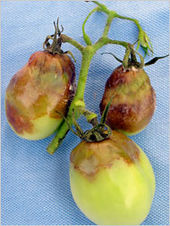Study finds hummingbirds have pared-down DNA
© Chris C. WittSmall genomes and flight appear to go hand in hand, and black-chinned hummingbirds (above) have the smallest genome of surveyed birds, reports a new study
Flying with excess baggage is a drag, but hummingbirds have mastered efficient packing. The tiny hoverers have less DNA in their cells than any other previously studied birds, reptiles or mammals, researchers report online August 5 in
Proceedings of the Royal Society B. Among hummingbird species, however, genome size doesn't vary along with body size, suggesting that birds' DNA was pared down before the diversification of today's hummers.
Scientists have long noted the link between small genome size and high metabolic rates - a notion first put forth in 1970 by Polish scientist Henryk Szarski. Bats and birds have the smallest genomes of backboned creatures, and flightless birds tend to have bigger genomes than fliers. The genome, or full book of genetic instructions, is typically present in every cell. So lugging around a smaller genome means you can have smaller cells, the thinking goes. Smaller cells mean a larger surface-to-volume ratio and more efficient gas exchange, all the better to fly with. (The metabolic rate of hummingbirds is thought to approach the theoretical maximum.)


Comment: Related Story:
US: The Irish Potato Famine Fungus Is Attacking Northeast Gardens And Farms Now